Your trip to French Polynesia inevitably begins with a stopover in Tahiti. This is your chance to learn more about its capital before discovering the heavenly beaches of Moorea and Bora Bora. With the help of this Papeete Guide, explore an energetic, sometimes boisterous city to the rhythm of the ukulele.
A Contrasting Reality
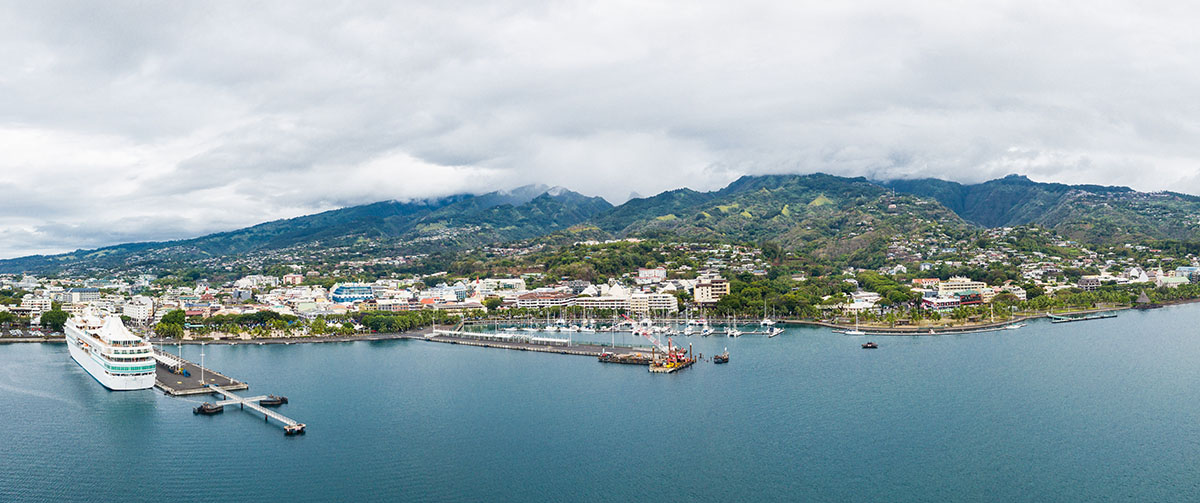
An Urban Fiasco?
There are cities with evocative names that leave no one indifferent. Papeete conjures up images of exoticism, promiscuity and dreams of escape. These commonplaces are part of the Polynesian myth that lives on in so many tourist brochures. And yet…
Founded by missionaries in the 18th century, Papeete is a recent creation. Natural disasters and the bombing of September 1914 took their toll on the colonial architectural heritage. In the 1960s, the repression of the independence movement and the establishment of a nuclear testing center precipitated the town’s transformation. Faced with the urgent need to house the military and civilians from metropolitan France on the one hand, and the Polynesian workforce on the other, urbanization was rapid, even anarchic, yet insufficient: the following decades saw the emergence of Grand Papeete, a conurbation formed along the coastline.
Papeete’s sudden development took place in the absence of any real urban policy. Certainly, some unscrupulous developers, the Territory’s political instability and the scourge of clientelism have also prevented the development of a long-term perspective. The result is a glaring lack of infrastructure, incessant traffic jams and a lack of architectural unity. Above all, this unharmonious architecture in no way reflects the Polynesian identity – whether modern or traditional – of the Fenua capital.
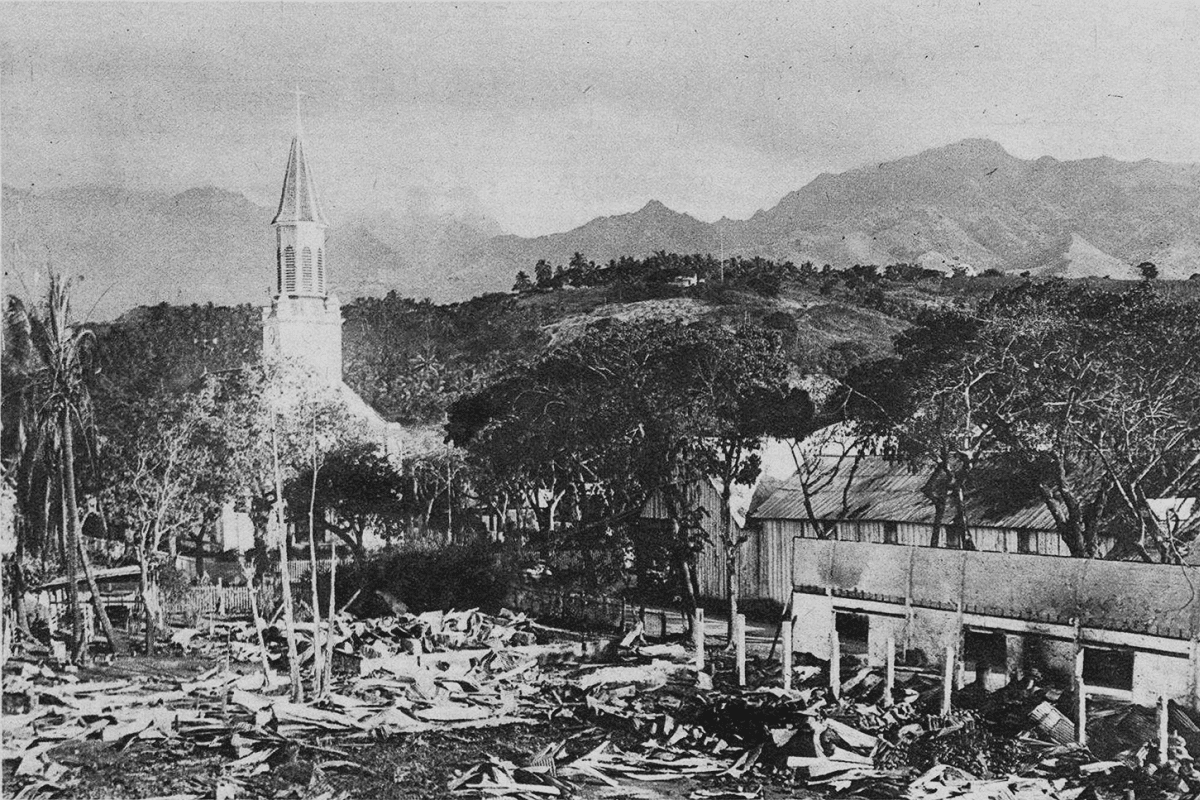
Strong Urban Boundaries
Demographic pressure, the housing crisis and the economic difficulties associated with island life have led to the emergence of idle areas where the most destitute populations are crowded together. Indeed, almost 40% of Tahiti’s population lives below the poverty line. It’s a misery that’s hard to hide behind the exuberance of nature. These makeshift dwellings can be found in the north-east in Taunoa, on the heights of Mamao, in the deep valleys and even in the town center!
Many of the local elite now live outside Papeete, particularly in Punaauia. In Papeete itself, the heights of the western districts are quite popular, such as Sainte Amélie and Tipaerui. Secure villas and private properties are more numerous here than in the rest of the city. These neighborhoods are home to the majority of expatriates.
Between these two worlds, indifference can sometimes turn to resentment, which partly explains the recent success of the pro-independence party in the elections. However, day-to-day relations remain cordial and often benevolent. The important thing for the tourist is to grasp the current reality of Papeete, which is above all a people’s city, and to try to learn from its inhabitants.
Polynesian or Colonial Architecture?
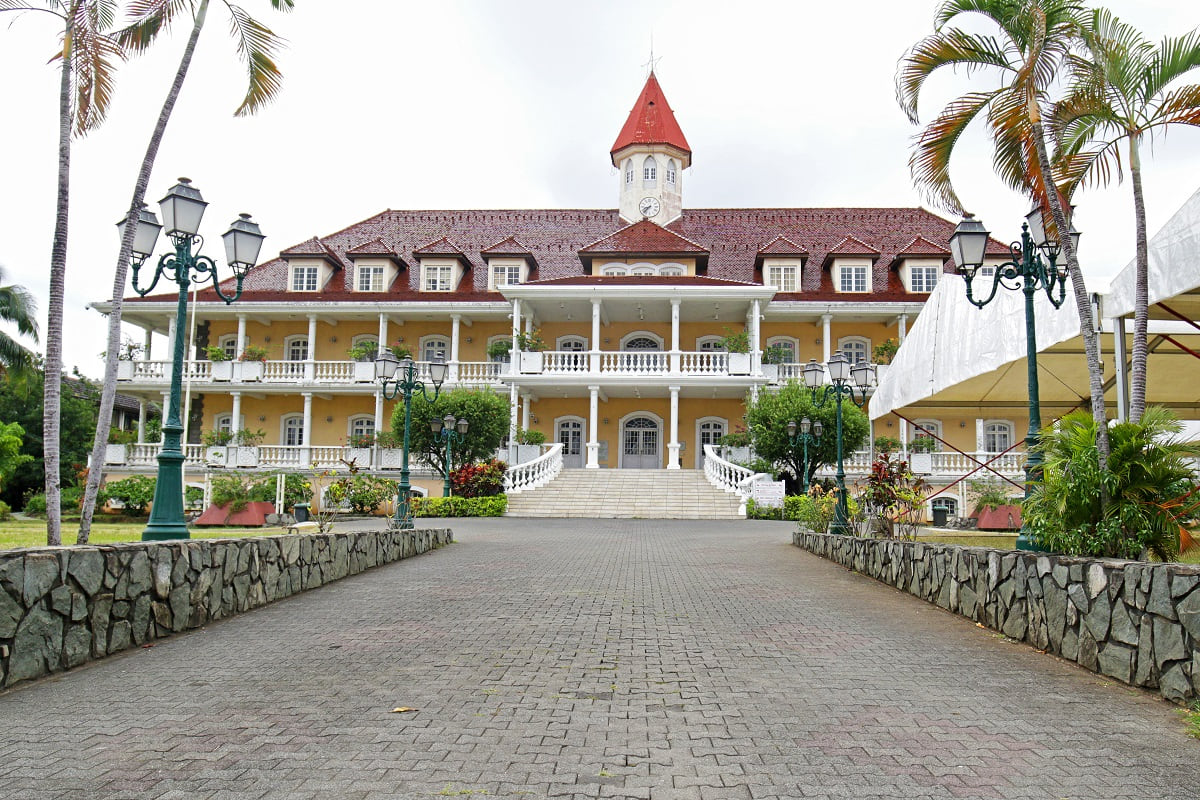
As mentioned above, Papeete’s architectural heritage has been reduced to a bare minimum. This void has been partly filled by a number of recent projects, strangely imitating the colonial past to the detriment of purely Polynesian heritage. These include the huge Papeete Town Hall, inaugurated in the 1990s, and the Presidential Palace, rebuilt around the same time.
These buildings are not open to the public – quite the opposite of Notre-Dame Cathedral! Located in the heart of the city, this neo-Gothic monument is one of the oldest in the city. A quick tour of its modest interior reveals the zero kilometer point (pk.0).
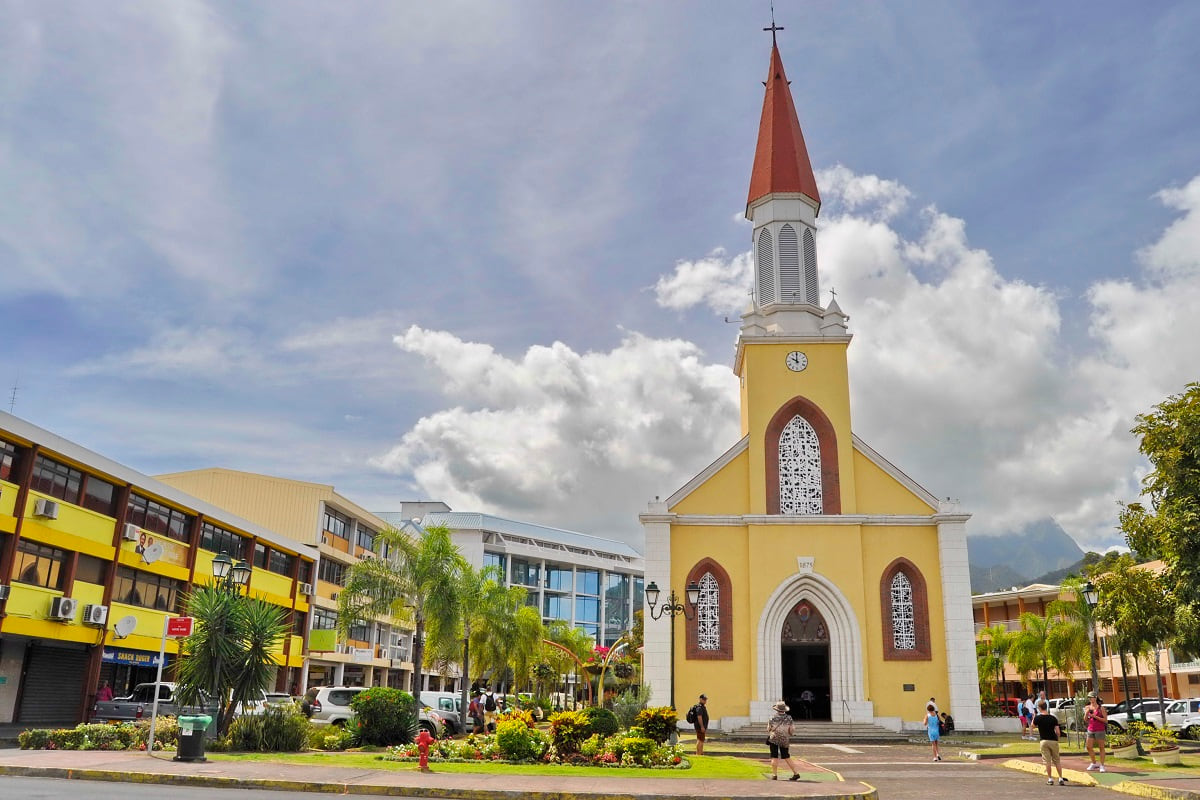
Government buildings struggle to display a radiant face and, failing authenticity, a minimum of cultural references specific to Polynesian identity. The choice of neo-colonial architecture is questionable today. However, as the Assembly of French Polynesia shows, the lines are moving. The building cleverly combines modernity and tradition: a true architectural success!
Papeete’s Four Highlights
Given these harsh facts, it goes without saying that most foreign visitors don’t linger in the Polynesian capital. Whether rightly or wrongly so. Papeete’s strength and vitality are expressed differently from other cities: here are a few places where the city expresses itself to the full.
Visit the Papeete Market
Right in the center of town, it’s impossible to miss the Papeete market. The rather confined space becomes the scene of a colorful festival where crowds bustle around stalls filled with fish, fruit, vegetables and flowers. Make your way through the hubbub and have fun observing this early-morning spectacle.
On the first floor, food is king: all the exotic products of the islands are on offer in heaps. Colors, flavors and aromas mingle! Upstairs, it’s the turn of the local craftsmen to take their place, offering you a multitude of unique items including pareos, hats, perfumes, monoi and so much more! You’ll find the finest Tahitian souvenirs to bring back from your trip.
A must is the Papeete market early on Sunday mornings. The adjacent streets are packed with stalls, vendors and musicians! The buzz starts at 4 a.m.: in a few hours, Sunday rest begins and all the stores close. A superb atmosphere not to be missed!
Together at the Food Trucks in Place Vaiete
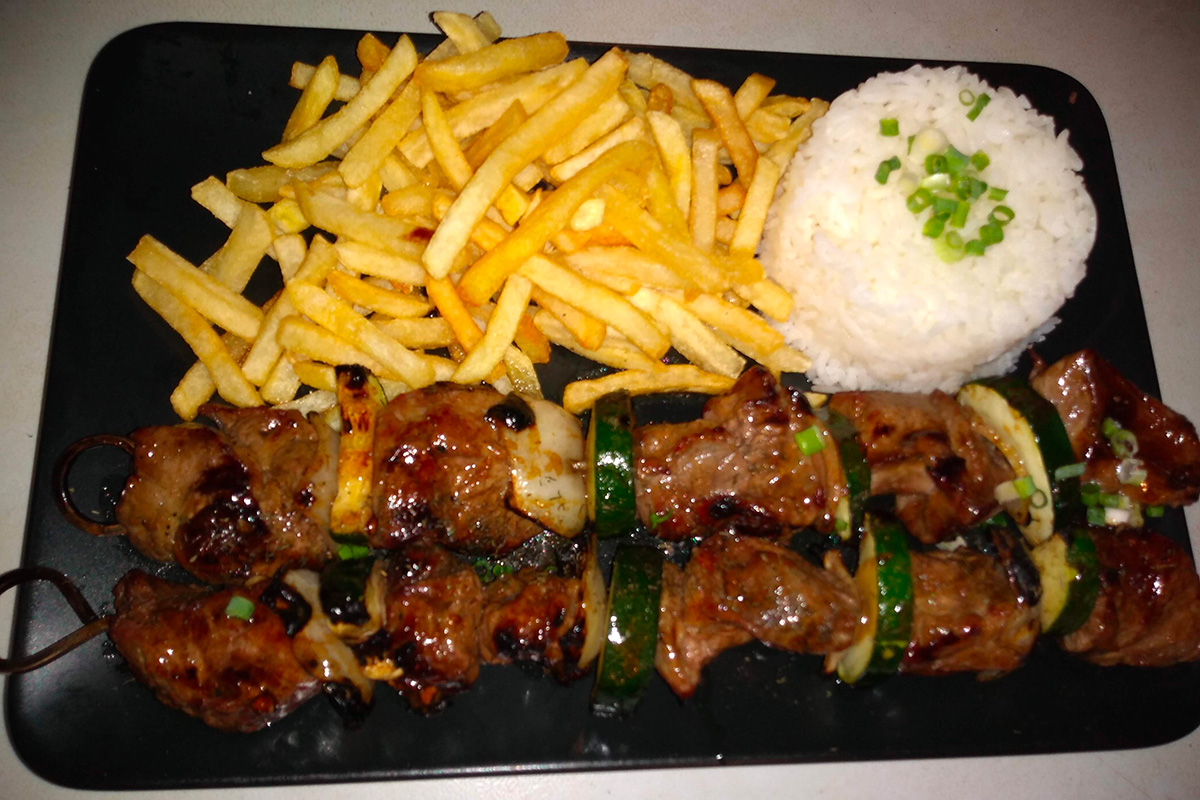
Tahitian food trucks are another local cultural institution. Join us in the late afternoon at Place Vaiete for an experience as gastronomic as it is social. This is where the whole of Papeete meets, amid the aromas of the world, the hubbub of conversation and laughter.
Let yourself be tempted by succulent dishes such as the unmissable raw fish in coconut milk, tuna mi-cuit, sashimi and tuna tartare. All the specialties of Tahiti are here! Don’t forget the oriental flavors imported from Southeast Asia, and savor the Chao Men. And the portions are often gargantuan.
To the sound of the muffled music, social barriers fall away: no fuss here. The atmosphere is popular, family-oriented and authentic. Conviviality is the order of the day, especially as alcohol is prohibited. So come with your stomach in your heels and share a moment with the locals.
A Stroll Along the Seafront
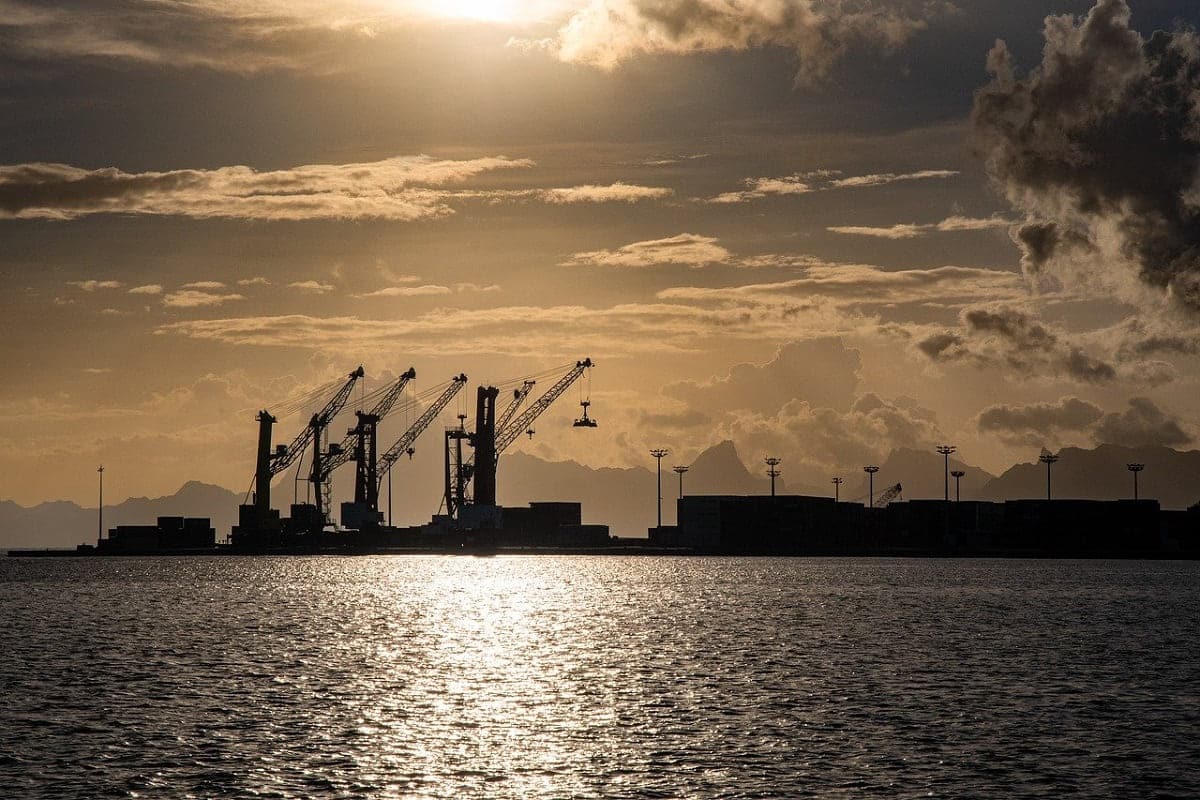
One look at the port of Papeete is all it takes to understand the importance of the sea lanes in French Polynesia. It’s here that fishing vessels, hydrocarbons and, more generally, all the consumer goods and foodstuffs needed to keep Tahiti and her islands running smoothly and supplied.
From the ferry terminal, watch the locals busily making their way to their sister island on the Tahiti-Moorea shuttle. These journeys are part of the daily routine for schoolchildren and workers. Further on, gigantic transpacific buildings dock near Vaiete Square, bringing in several hundred visitors for a day’s getaway.
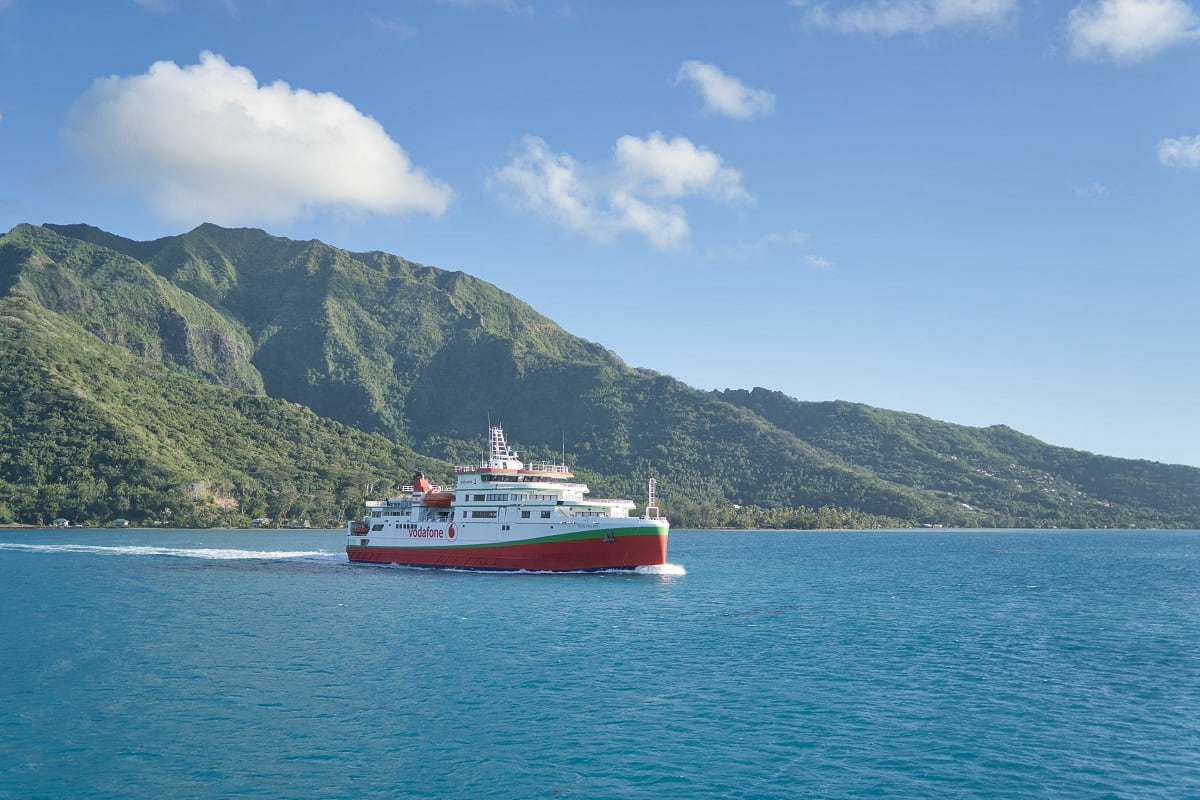
As you make your way down the seafront, you’ll find a number of landscaped areas, including the pretty Parc Bougainville and the Paofai Gardens. This short stroll of barely two kilometers ends at Place Toata, Papeete’s cultural and festive hub. It’s sure to make for a pleasant stroll during your stay!
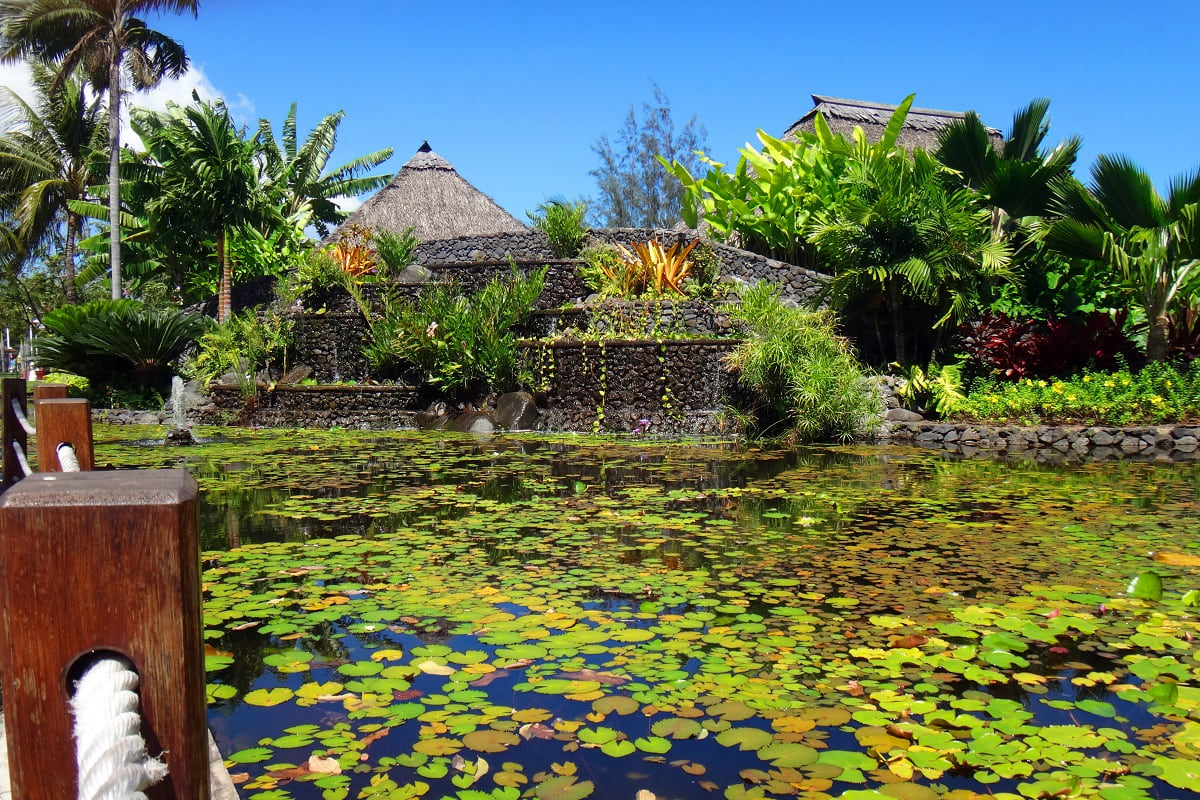
Capital of Street Art
Despite social and economic difficulties, popular Papeete can count on the dynamism of its youth and a growing awareness of the importance of Polynesian heritage. Some of the finest creations of recent years include numerous murals. The city is the street art capital of the South Pacific.
Polynesian and international artists practice a perspective of urban appropriation. Their works depict everyday life, history and cultural identity. They bear witness to the richness of Polynesian heritage through modern, artistic reinterpretations of Polynesian myths.
Street art is both urban and ephemeral. Some works lose their original brilliance and are covered over, while others fall into oblivion. An improvised exploration can lead to some wonderful discoveries. Luckily, many frescoes are located in the city center.
An Evening Out in Papeete?
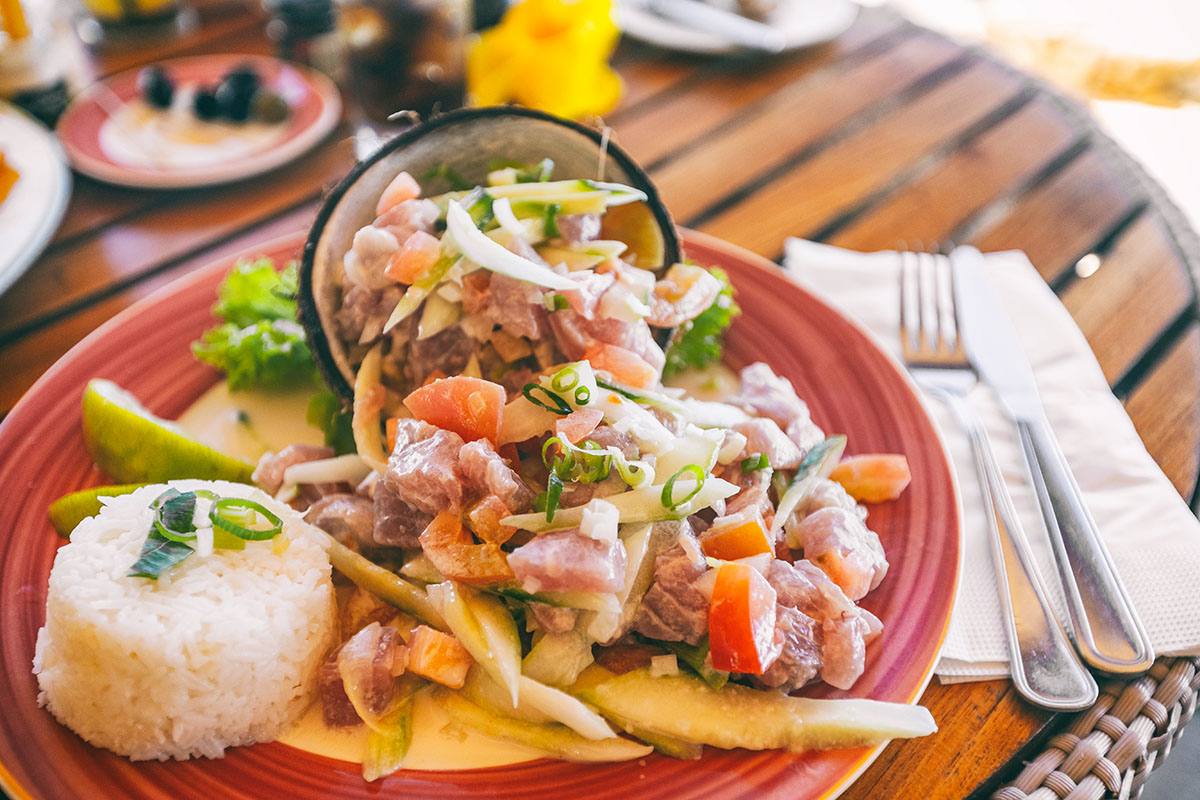
Perhaps you’d like to stay in Papeete for a few days, either as a base for your excursions on Tahiti, or while you wait for your international flight home. After the lovely stroll from the ferry terminal to the Paofai Gardens, don’t forget to book a table at one of the city’s top restaurants! Choose according to your taste and budget.
Papeete boasts numerous establishments, from the most luxurious to the most modest, offering a variety of Polynesian, French and Asian cuisine. You’ll discover haute cuisine at the Hei restaurant and the aptly-named L’o à la bouche, where you can savor some of Polynesia’s finest gourmet dishes. In the mid-price range, it’s impossible to miss the Kozy Restaurant and the beautiful vegetarian salads at L’Autrement.
Always in moderation, you can then win two unusual addresses for cocktails, wines and local beers. First, head to Reeftop, a panoramic bar overlooking Papeete Bay. Secondly, Wonderland offers fast food and board games in a friendly atmosphere.
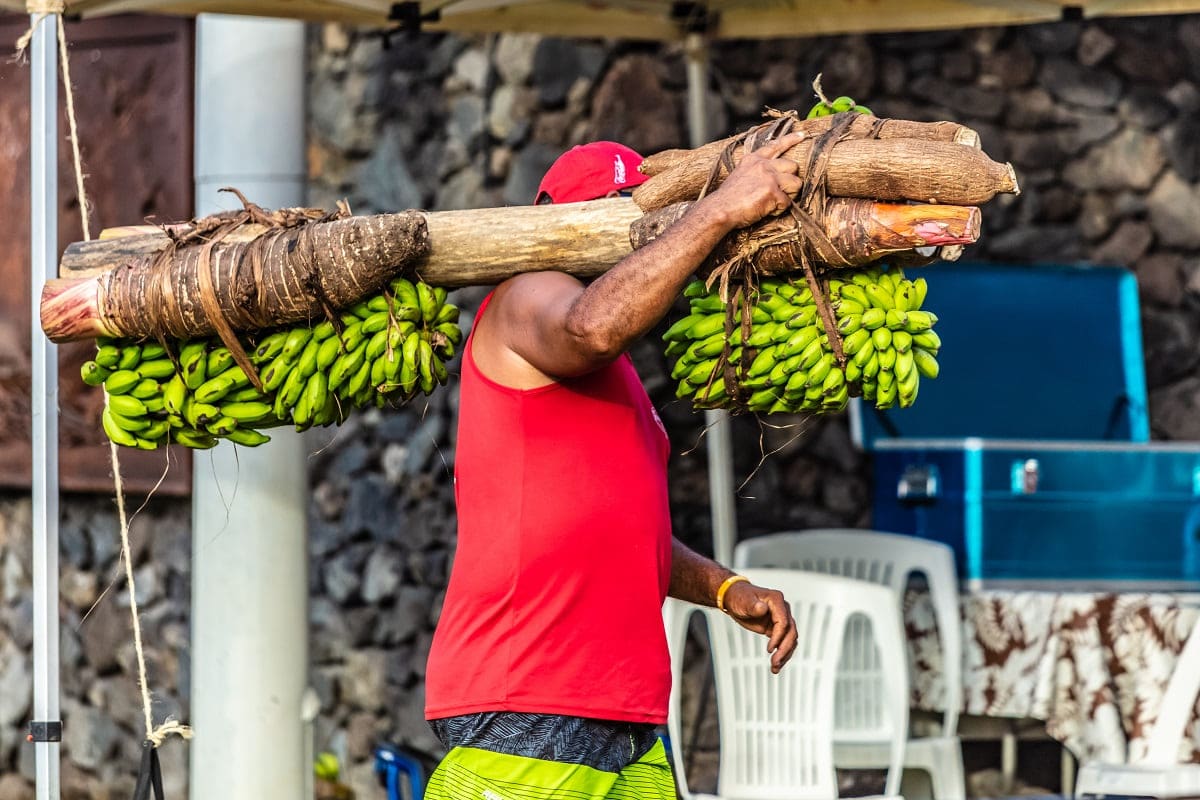
Discover Daily Life in Papeete
Papeete may not have flamboyant architecture, but it’s brimming with artistic, cultural, sporting and culinary talent. For these energies to express themselves, all they need is a little space. The city is best discovered through contact with its inhabitants, from markets to tattoo studios. So start planning your trip to Tahiti and contact us to organize your activities.

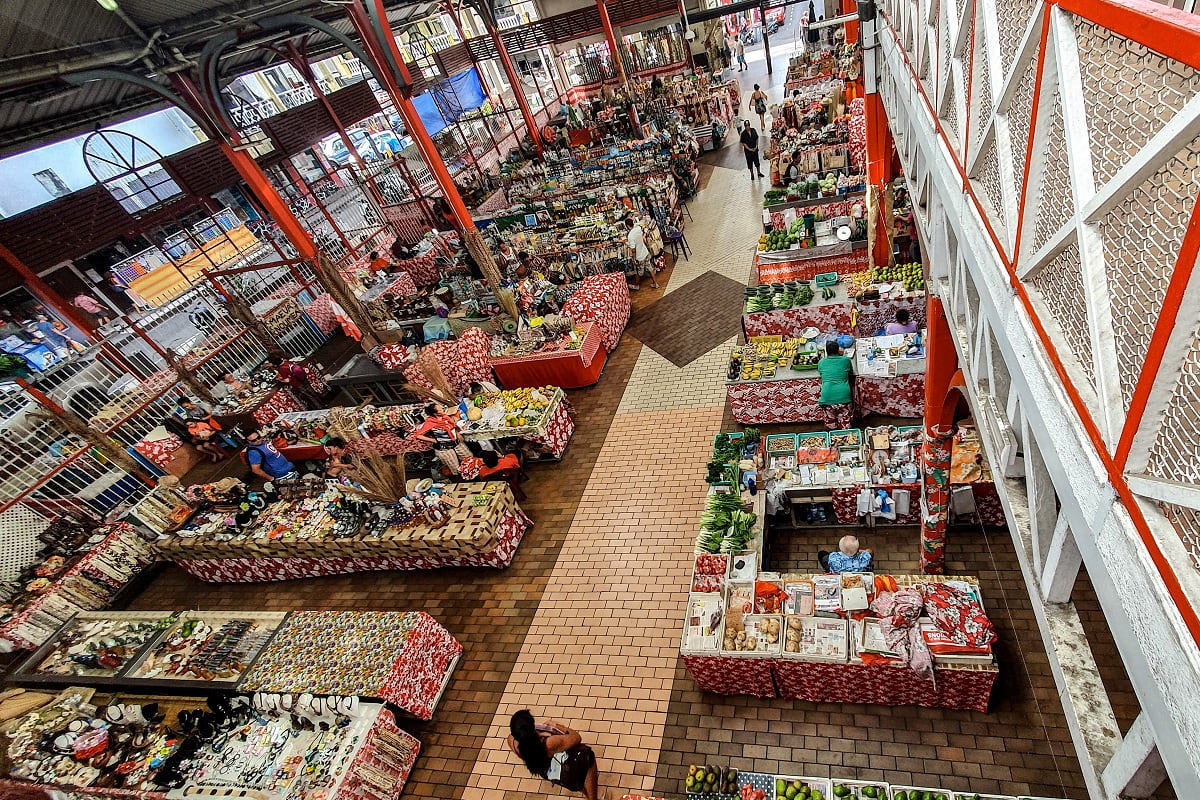

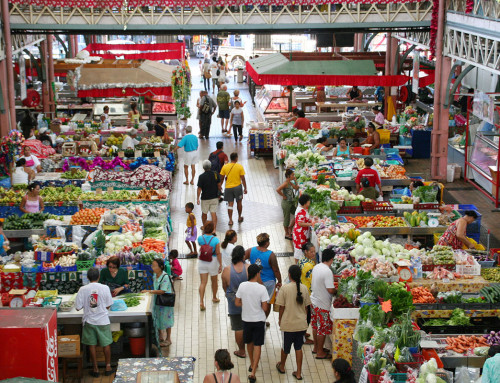
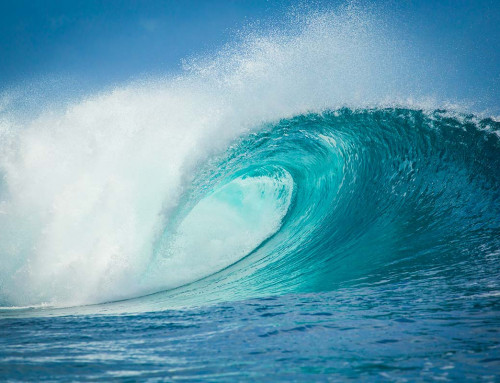

Leave A Comment